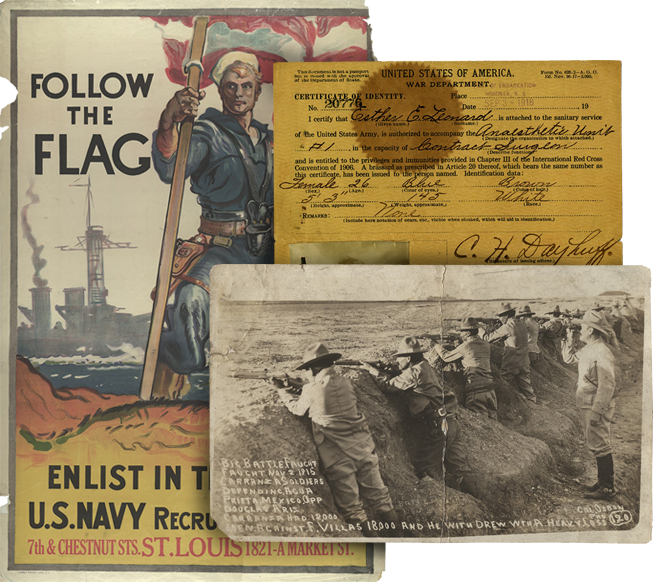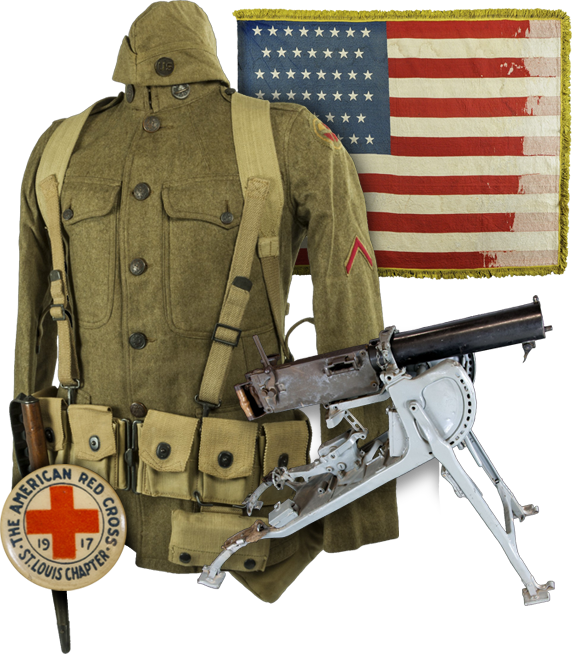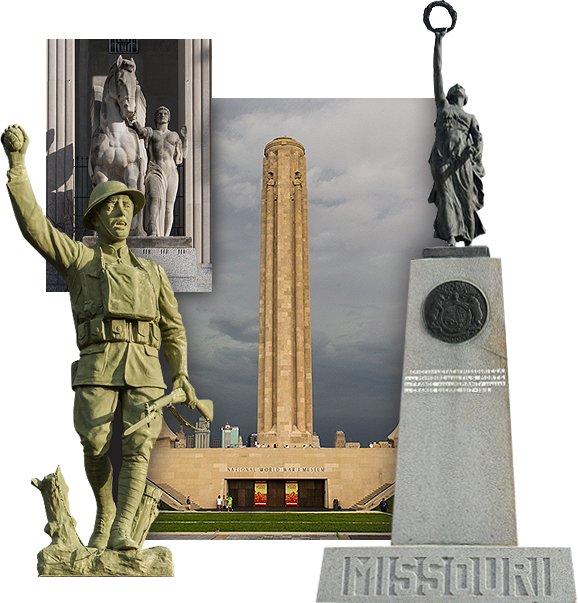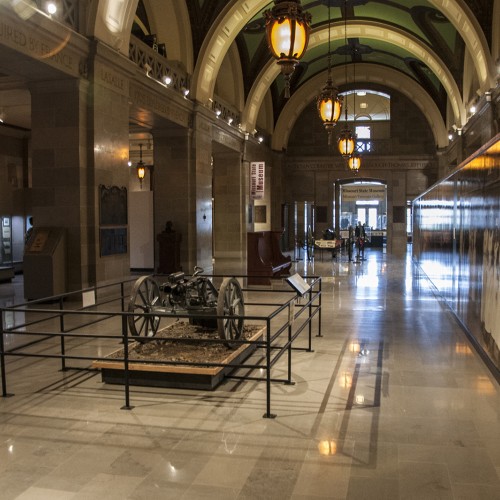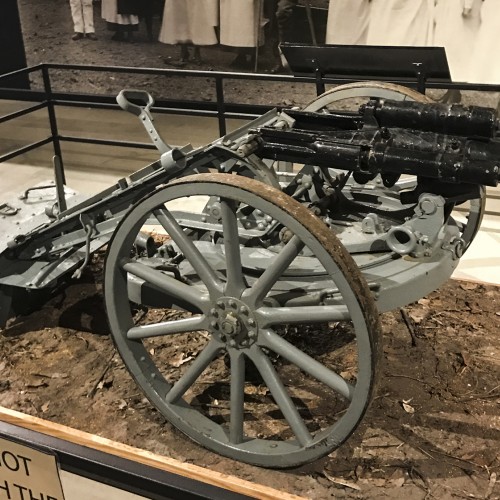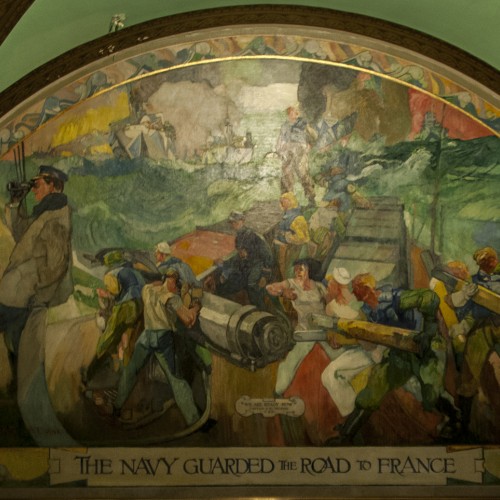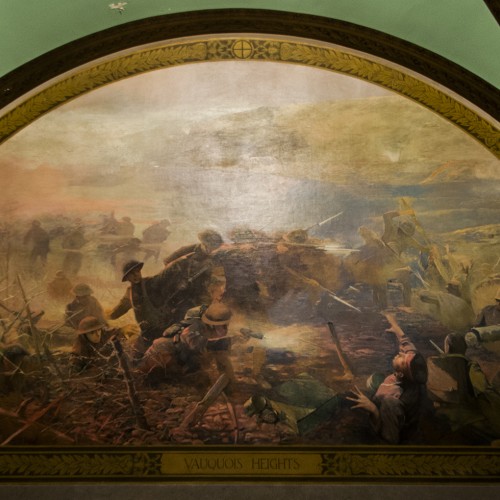





Missouri State Capitol
Description
The Missouri State Capitol in Jefferson City has a number of monuments and memorials to Missouri WWI Veterans. In 1919 the east wing of the building was dedicated as a Soldiers and Sailors Memorial Hall, dedicated to all Missouri Veterans of WWI. It now serves as the History Hall of the Capitol, where the service of Missouri Veterans from many different conflicts is commemorated.
Within the History Hall stands a bronze memorial plaque that stands “in grateful memory” of Missouri’s WWI Veterans, listed are soldiers who were affiliated with the Daughters of the American Revolution and Sons of Revolutionary Patriots groups. The plaque was dedicated on October 2, 1926 by the Missouri State Society of the Daughters of the American Revolution.
Another bronze plaque that hangs in the History Hall, dedicated in 1924 to “the devoted service of the Army Nurses of Missouri with the Expeditionary Forces of the World War”. The text on the plaque, is in the French language, but loosely translates to “The Boat of the Eight Hats and Forty Women”.
Also located within the history hall is a small German artillery piece known as a Minewerfer, which translates to “mine launcher”. It was brought to the museum in 1926 along with a large number of other relics that are now part of the Missouri State Museum’s collections.
On the second floor, above the history hall stands two paintings dedicated to the service of Missouri WWI veterans. One centers on the effort of the Navy and is titled “The Navy Guarded the Road to France”. It was completed between 1920 and 1923 by the artist Henry Reuterdahl, who himself was a Lieutenant Commander in Navy prior to WWI. He was well known for painting of Navy scenes and for his work creating wartime posters promoting Navy exploits. His painting displays a striking amount of modernism for a “historical” painting and when compared to almost every other painting in the Missouri State Capitol, it stands alone stylistically. The painting depicts the first American ships to arrive in France being threatened by a German submarine. General John J. Pershing helped Reuterdahl select the imagery and subject matter for the painting.
Another painting, to the left of the previously mention work, is Adolphe Blondheim’s “Vauquois Heights”, which focuses on the land exploits of the American Expeditionary Force in France during the Meuse Argonne Offensive of 1918. The painting was completed prior to 1922 and depicts soldiers of the 35th division taking a hill from German opposition. The subject for this painting was again chosen by General Pershing, who decreed Vauquois Heights was one of the most significant battles that Missouri Soldiers participated in. The painting was met with mixed reviews, some considered it flat and could have been anywhere in France. Others viewed the painting as an accurate depiction of the 35th division’s efforts during the battle of the Meuse, one in which Harry S. Truman was present and wrote about in his letters to his future wife Bess Wallace.
Information gathered from The Art of the Missouri Capitol: History in Canvas, Bronze, and Stone by Bob Priddy.

